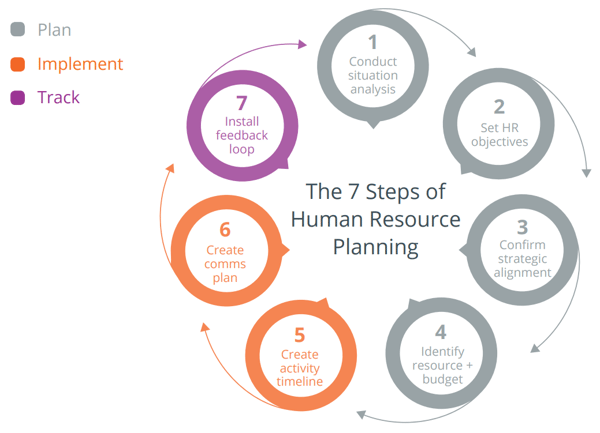
Businesses will demand more and more of Human Resources teams this year. It’s a big challenge – and opportunity – for HR Managers.
The face of the workplace has changed. Today's new normal is a hybrid workforce, operating a mixture of centralized and remote work. But more change is still to come.
Strategic priorities such as change management require dedicated focus, but key areas like employee engagement can’t be neglected. Managing the needs of the business as well as those of staff will call for careful balancing.
To juggle these conflicting demands, HR managers need a plan. Effective Human Resource planning charts the course for the year ahead. It makes it easier for organizations to recruit, retain and reinforce the strong workforce needed to achieve business goals.
In this article, we summarize the top things Human Resource Managers should focus on this year, outline the steps to creating an effective HR Plan, and share planning templates that are free for you to download.
Jump ahead:
The key HR priorities this year
How to create an effective HR plan
Download human resource plan templates
The key HR priorities this year
1. Development and training
The biggest priority for HR Managers, according to Gartner, is building critical skills and competencies. This is how successful organizations maximize workplace performance and maintain competitive advantage.
It’s an area where digital can really drive HR. Skills gaps and training needs can be readily identified, and customized development programs delivered – avoiding those stuffy meeting rooms and ‘one size fits all’ training.
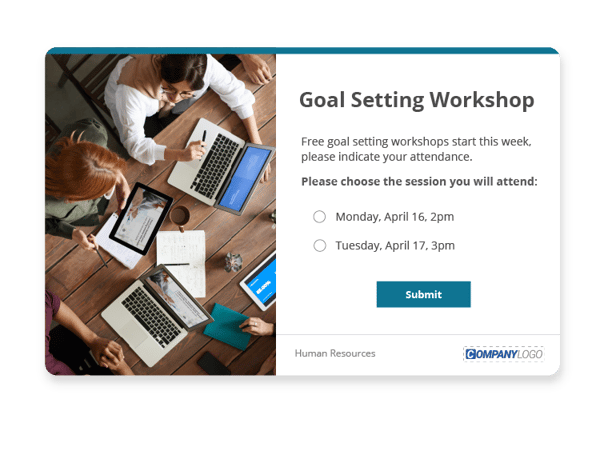
2. Employee engagement
Engagement relies on connecting with employees. That’s why so many organizations have seen drops in engagement during times of remote work.
Staff isolated by geography experience disconnection with the company. The absence of regular in-person contact causes employees to feel more removed from their team, their managers, and the company.
Recent HR research proves using multiple communication channels to be more effective in engaging different groups of staff.
3. Change communications
Gartner reports that organizational design and change management is the second-highest priority for HR Managers. This has the potential to further destabilize already uncertain employees. Managing and communicating this is critical.
Managers and HR teams are flooded with questions from employees on the nature of these changes and how their role is affected. Strong, visible leadership is essential to maintain morale, ensure business continuity and protect the brand.
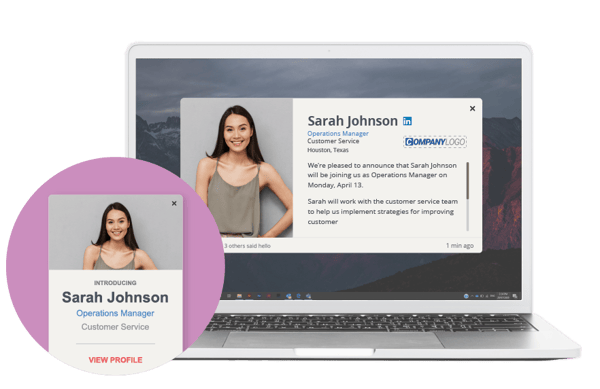
4. Recruiting and onboarding
Recruitment hasn’t ceased just because we’re working remotely. Far from it. But effective onboarding is more critical than ever.
With in-person onboarding, new hires would be welcomed to the organization with a tour of the facilities, introductions with key personnel, and shared social occasions, all designed to integrate them and make them feel comfortable.
Today’s online onboarding must replicate the benefits of in-person onboarding, but leverage the opportunities of the digital environment to create a richer, more immersive experience.
5. Health and wellbeing
Work is stressful, even under normal conditions. That’s why one million workers in the United States miss work every day due to stress. But combine this with the demands of remote working and restrictions of social isolation, and the impact on employee wellbeing is amplified.
Employees find themselves spending high amounts of screen time, taking fewer breaks, and neglecting exercise and nutrition. Left unresolved, these can seriously affect both physical wellness and psychological health.
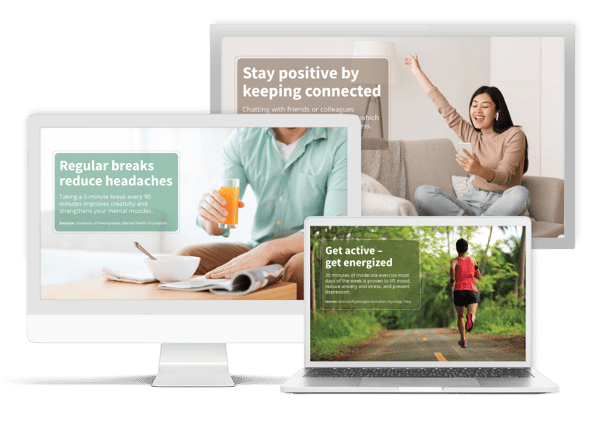
6. Workplace culture
The importance of positive company culture is well understood. Companies with strong cultures saw a 400% increase in revenue growth. But how can strong company culture be fostered digitally?
Shared social and team-building experiences, the traditional foundation of workplace culture, are no longer possible. Without the personal touch of centralized workplaces, relationships require more effort to maintain.
How to create an effective HR plan
There are three key stages to successfully preparing, creating, and executing your HR strategy: Plan, Implement, Track. Each stage includes information to gather and things to prepare from initial scoping through launching to staff to assessing performance.
While they can seem overwhelming at first, they are important to improve HR communication and ensure your plan achieves its objectives. A summary of these is shown here - and included in the downloadable planning checklist below.
1. Plan
-
Situation analysis – defining the current state of the business and the desired future state
-
HR objectives – confirming key Human Resources priorities with SMART goals
-
Strategic alignment – ensuring HR objectives support overall company goals
-
Resource requirements – summarizing what is available now and what is required to deliver to HR objectives (this could be people, capabilities, systems, or support)
-
Budget requirements – establishing funding requirements for additional resources in line with objectives
2. Implement
-
Timeline of activities – specifying the timeframe for goal achievements and setting major milestones to be met along the way
-
Communication plan – defining key messages to be delivered, audiences to be targeted and channels to be employed
-
Content creation – identifying any new process, policies, or training materials required
-
Plan B – confirming a contingency in the event of poor results or change in circumstances
3. Track
-
Feedback mechanisms – introducing a way to track campaign performance, gauge employee sentiment, and identify focus areas for improvement
-
Regular reporting – setting a schedule to provide performance updates for staff and management
Download human resource plan templates
With so much for Human Resources Managers to consider when creating their plans, we've prepared some free downloadable templates to help. Access these through the form below and share them with your HR team. You'll receive:
-
Strategy guide - Details on the 6 things your plan needs to succeed this year
-
Planning checklist - Make sure your plan covers everything it needs to (including a plan B)
-
Activity schedule template - Track all your goals and initiatives in this editable project management tool that works alongside the annual HR calendar
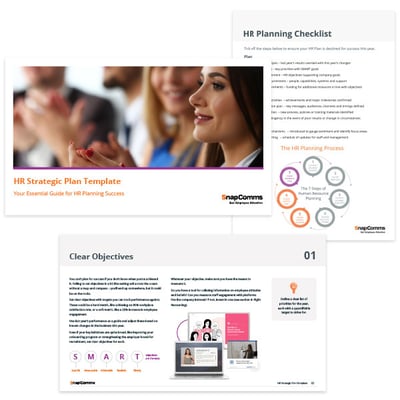
To get your free copy of each of these valuable resources, simply complete this form.
